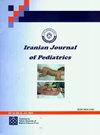孕产妇铜/锌摄入量与早产风险之间的关系
IF 0.4
4区 医学
Q4 PEDIATRICS
引用次数: 0
摘要
背景:母体铜和锌的摄入量与早产风险之间的关系尚不清楚:本研究旨在探讨孕前和孕期每日铜和锌摄入量对早产风险的影响,并评估铜和锌摄入量与早产风险之间是否存在交互作用:在兰州进行了一项巢式病例-对照研究,涉及 880 例病例和 8017 例对照。研究人员对符合条件的参与者进行了访谈,了解他们在怀孕期间的饮食习惯和特征。采用无条件逻辑回归法确定膳食中铜和锌的摄入量与早产风险(包括其临床亚型)之间的关系。采用多变量调整限制立方样条(RCS)模型来研究膳食中铜和锌的摄入量与早产风险之间的非线性关系。结果显示研究显示,与孕前和孕期膳食铜摄入量最高的孕妇相比,铜摄入量处于较低三个四分位数(四分位数 1、2 和 3)的孕妇早产风险增加,调整后的几率比(ORs)分别为 1.05(0.96 - 1.14)、1.05(0.93 - 1.18)和 1.04(0.82 - 1.32)。趋势检验得出了显著结果(P = 0.013),尤其是在妊娠晚期,表明铜摄入量较低与早产和自然早产风险增加之间存在关联。妊娠期母体膳食锌摄入量与早产风险呈正相关。在整个孕期,四分位数 2 与四分位数 4 相比,调整后的 OR 分别为 1.29(1.09 - 1.52)、1.55(1.13 - 2.12)和 1.20(1.00 - 1.46),这表明妊娠中后期的风险显著增加。没有发现锌摄入量与医学诱导的早产之间有明显联系。妊娠晚期锌摄入量低于营养参考值与早产风险增加有明显关系(P < 0.05)。铜/锌摄入量与早产风险之间存在非线性关系(P 非线性 < 0.05)。铜和锌的低摄入量对早产风险有协同作用(OR:2.23,95% CI:1.64 - 3.04,P <0.001)。结论为了降低早产的发生率,需要加大力度促进孕前和孕期摄入充足的铜和锌。本文章由计算机程序翻译,如有差异,请以英文原文为准。
Association Between Maternal Copper/Zinc Intake and the Risk of Preterm Birth
Background: The relationship between maternal copper and zinc intake and the risk of preterm birth is unclear Objectives: This study was designed to investigate the effects of daily copper and zinc intake before and during pregnancy on the risk of preterm birth and to assess whether there is an interaction between copper and zinc intake and the risk of preterm birth Methods: A nested case - control study was conducted in Lanzhou, involving 880 cases and 8017 controls. Eligible participants were interviewed about their diet and characteristics during pregnancy. Unconditional logistic regression was used to determine the association between dietary copper and zinc intake and the risk of preterm birth, including its clinical subtypes. A multivariate adjusted restricted cubic spline (RCS) model was used to investigate the nonlinear relationship between dietary copper and zinc intake and the risk of preterm birth. Results: The study revealed that compared to pregnant women with the highest dietary copper intake before and during pregnancy, those with copper intake in the lower three quartiles (quartiles 1, 2, and 3) had increased risks of preterm birth, with adjusted odds ratios (ORs) of 1.05 (0.96 - 1.14), 1.05 (0.93 - 1.18), and 1.04 (0.82 - 1.32), respectively. The trend test yielded significant results (P = 0.013), particularly in late pregnancy, indicating an association between lower copper intake and increased risks of preterm and spontaneous preterm birth. Maternal dietary zinc intake during pregnancy was positively associated with the risk of preterm birth. The adjusted ORs for quartile 2 compared to quartile 4 were 1.29 (1.09 - 1.52), 1.55 (1.13 - 2.12), and 1.20 (1.00 - 1.46) throughout pregnancy, indicating significantly increased risks in the mid to late stages of pregnancy. No significant association was found between zinc intake and medically induced preterm birth. Zinc intake below the nutritional reference value in late pregnancy was significantly associated with an increased risk of preterm birth (P < 0.05). A nonlinear relationship was observed between copper/zinc intake and the risk of preterm birth (P Nonlinear < 0.05). A synergistic effect of low copper and zinc intake on the risk of preterm birth was found (OR: 2.23, 95% CI: 1.64 - 3.04, P < 0.001). Conclusions: Efforts to promote adequate copper and zinc intake before and during pregnancy need to be intensified to reduce the incidence of preterm birth.
求助全文
通过发布文献求助,成功后即可免费获取论文全文。
去求助
来源期刊
CiteScore
0.90
自引率
20.00%
发文量
75
审稿时长
6-12 weeks
期刊介绍:
Iranian Journal of Pediatrics (Iran J Pediatr) is a peer-reviewed medical publication. The purpose of Iran J Pediatr is to increase knowledge, stimulate research in all fields of Pediatrics, and promote better management of pediatric patients. To achieve the goals, the journal publishes basic, biomedical, and clinical investigations on prevalent diseases relevant to pediatrics. The acceptance criteria for all papers are the quality and originality of the research and their significance to our readership. Except where otherwise stated, manuscripts are peer-reviewed by minimum three anonymous reviewers. The Editorial Board reserves the right to refuse any material for publication and advises that authors should retain copies of submitted manuscripts and correspondence as the material cannot be returned. Final acceptance or rejection rests with the Editors.

 求助内容:
求助内容: 应助结果提醒方式:
应助结果提醒方式:


